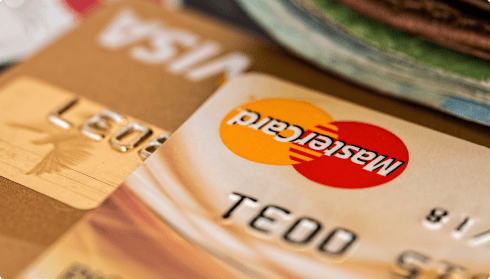Many businesses don’t know how much they should be paying for credit card processing. However, we can guarantee you that the average merchant is paying too much. It can make a big difference in the cash flow of your business. It’s not fun but it’s worth the time to take a few small steps to get the cheapest credit card processing you can get.
You're mostly paying interchange in payments
The first thing you need to know is that the interchange rate should be the largest portion of your payment processing fees. You can view the interchange rates in Canada to see the range. In general, you are likely paying an average of 1.8% in interchange fees.
Interchange is the non-negotiable aspect of payment processing fees. Even the largest companies like Walmart pay the interchange fees set by Visa and MasterCard.
The key thing to find out is how much over interchange you are paying.
Learn how much over interchange you are paying
The simple way to know how much over interchange you are paying is to calculate your effective rate. This is a simple calculation. Take all your payment processing fees that you paid in a given month and divide it by the total amount of credit card sales you had. That’s your effective payment processing rate.
It is likely that your effective rate is above 2.8%. It is very possible that your effective rate is above 3.8% or even more. We’ve seen merchants that unknowingly pay 5%. When you have numbers like these, you have room to save on your payment processing because you are paying 1% to 2% or even more above interchange.
In the end, if you are paying more than 0.5% above interchange, there is likely room to save.
There are other fees than interchange
You will have to keep in mind that there are other fees than interchange. There is no business that only pays the interchange rate. Payment processors provide software, hardware, and customer support. There are costs behind that. Let’s say that the cost of that is 0.25% for a credit card processor. That’s a reasonable amount for a well-run payment processor to be profitable.
Everything above that total of 2.05% (1.8% + 0.25%) is additional profit for whoever is doing your payment processing. It’s almost certain that there is room for you to save. If your effective rate is close to 3.05%, you can save 1% of all your gross sales. That is a big margin that can go to your profit or reinvesting into your business to deliver a better service.
It’s important to note that the way you accept credit card payments matter. For example, you get cheaper payment processing by using credit card machines and terminals compared to online payments. This could make a difference of 0.5%. The reason for the fee difference is there is more risk in online payments, therefore interchange rates are higher to compensate for that.
There are other ways to save in payment processing
If you work with a great payment processor, they will help you save more than the numbers stated above. These savings are very specific to each business. Therefore, it is best to work with your payment processor to discover the areas to save. For example, if you are a non-profit, you should be categorized as such because you will get better rates. If you can start to use recurring billing for your customers, your interchange rates will be lowered.
Learn how we can help you reduce your payment processing fees.






